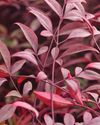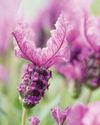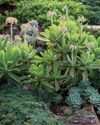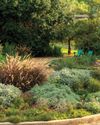
Moss poles make it easy for plants like these to attach their roots, as it provides a surface that mimics their natural habitat in tropical forests. It also provides a medium that has extra micronutrients the plants will benefit from.
Moss is easy to keep damp to help keep the aerial roots, which are how the plants climb, watered. You can also think of a moss pole as another source of humidity for plants that require a lot of it.
How to use the pole
To use a moss pole, first soak it in water until it’s saturated and then place it in the centre of a pot. Add soil to secure the pole in place and then plant the plant around the pole. Wrap the vines around the pole and secure lightly with garden ties, Velcro or twine. Be careful when doing this – some plants have stronger stems but others are very delicate. Try and make each node on the stem close to the pole – this is where the roots will form.
Option 1
This option requires a bit more time than option 2, but they will be with your plants for a while so the effort is worth it.
What you need
Bu hikaye The Gardener dergisinin June 2022 sayısından alınmıştır.
Start your 7-day Magzter GOLD free trial to access thousands of curated premium stories, and 9,000+ magazines and newspapers.
Already a subscriber ? Giriş Yap
Bu hikaye The Gardener dergisinin June 2022 sayısından alınmıştır.
Start your 7-day Magzter GOLD free trial to access thousands of curated premium stories, and 9,000+ magazines and newspapers.
Already a subscriber? Giriş Yap

FIRE AND Feathers!
On a dreary winter's day, a screen of fiery and feathery leaves puts up a fight against dullness!

GET THE ladies in!
At this time of year, early-flowering shrubs vie with each other to get the most attention. We say: Trust those with female names for frills and butterflies. They go the extra mile to flower their hearts out.

Vegetable Soups and dumplings
Vegetables make the most delicious soups and classic combinations are always a winner.

Yummy sweet potatoes for your good health
Boiled, baked or braaied, sweet potatoes (Ipomoea batatas) are a delicious and healthy winter comfort food. Just a dollop of butter, a little seasoning and you are good to go.

Pretty and functional
If cooking is your main thing, you would probably be more interested in the culinary value of the three herbs and some of their varieties we are describing.

Dried Seedheads & Pods
Autumn and winter are the best times to see what flowers produce the best seedheads that can be left on the plants to feed the birds and bugs and for harvesting for dried arrangements.

SO MANY FACES and so many choices...
Whoever associated a Cotyledon orbiculata (pig's ear) with the ear of a pig obviously did not know about all the varieties and cultivars this species in the genus Cotyledon has.

COLOURFUL Cold Weather WINNERS!
If it comes to a vote, these dependable shrubs will be the top candidates for prime performance in winter and in other seasons...

What makes a garden sustainable?
It is interesting to note that the United Nations defines sustainable development as: “development that meets the needs of the present without compromising the ability of future generations to meet their own needs”.

Nurturing NATURE-The Story of Kraal Garden's Transformation
Nestled within Prince Albert's rustic embrace lies a gem that is a testament to the transformative power of human vision and nature's bounty.